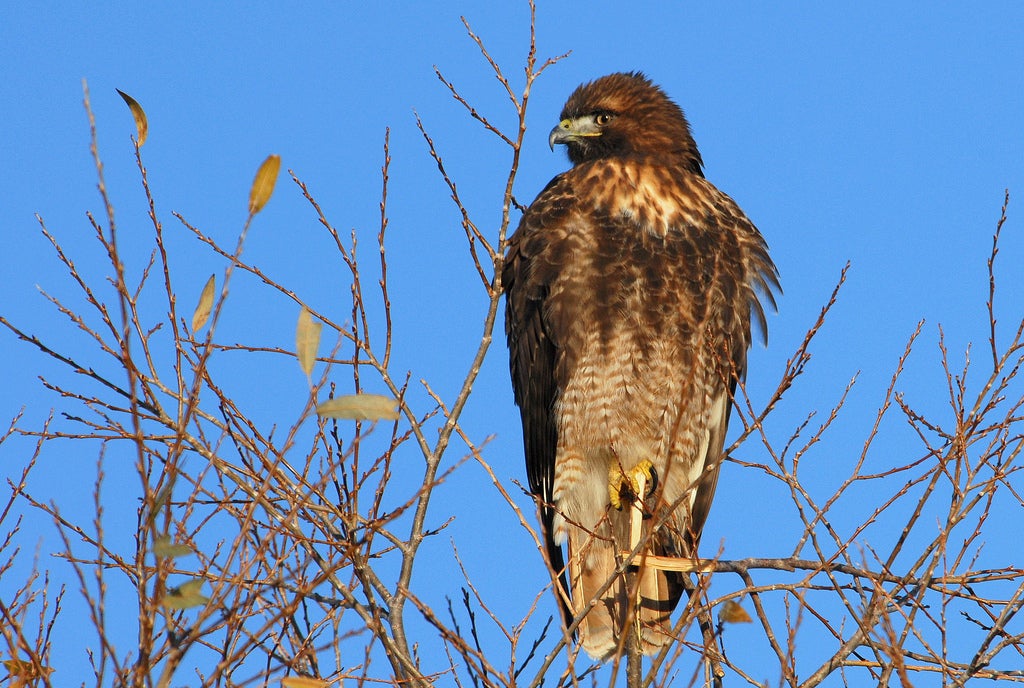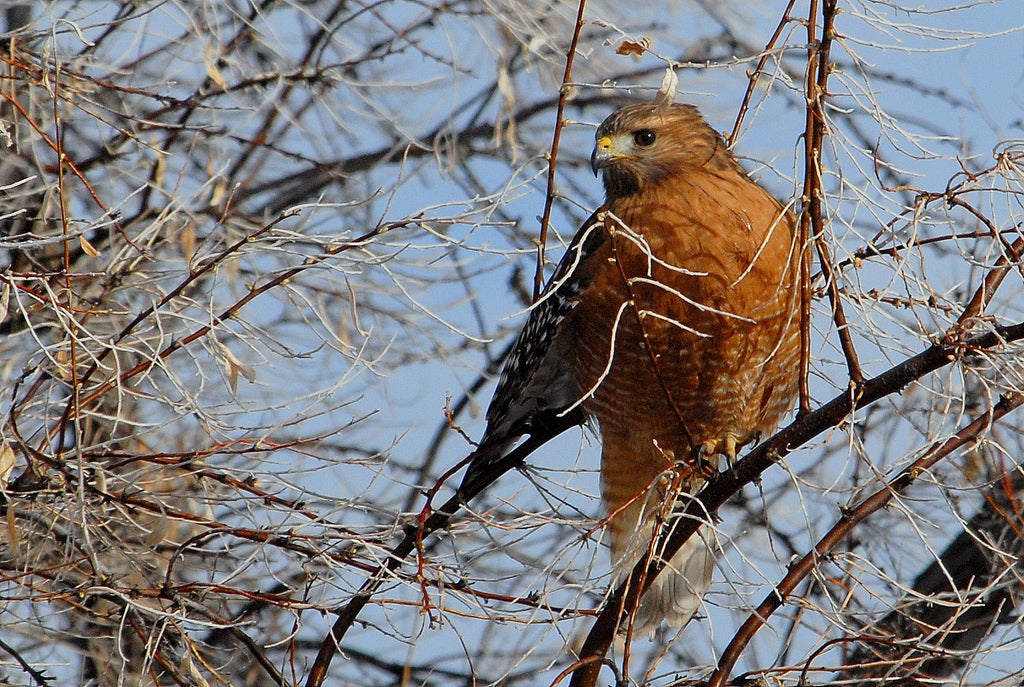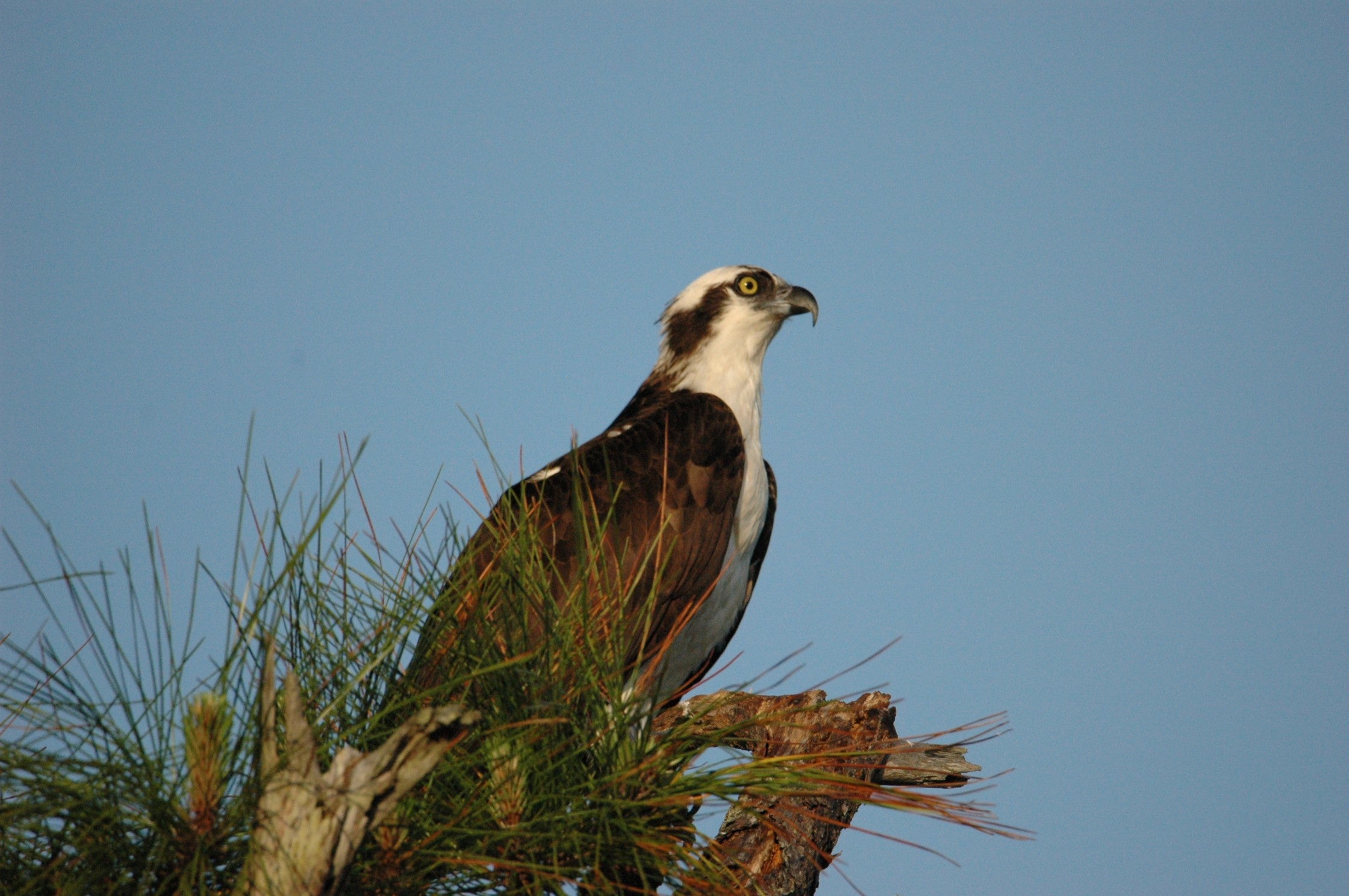By Richard Tharp, Wildlife Biologist, Division of Wildlife and Freshwater Fisheries
Hawks are part of a large family called Accipitridae,which includes ospreys, kites, and eagles. Falcons, members of the Family Falconidae, are closely related and often referred to as hawks. The information following will summarize five groups: the buteos, accipiters, falcons, harriers, and the ospreys. The buteo hawks are the largest group. They are characterized by broad, round wings and tail. They are not suited for fast flight, but are known as gliding and soaring hawks. These birds have great value in that they feed heavily on rodents. These hawks include the red-shouldered hawk, broad-winged hawk, Swainson’s hawk, red-tailed hawk, and the rough-legged hawk.
Accipter hawks differ from the buteos in that they have short, rounded wings and a long tail. They are skilled, strong fliers and have the ability to pursue prey into dense cover or woods. Birds are the food of choice for these hawks. The sharp-shinned and Cooper’s hawk make up this group.
Aerodynamic bodies, long slender wings and long tails enable the falcons to be the speedsters of the hawks. Insects and birds are the principle food items of the American kestrel, merlin, and peregrine falcon.
One species falls into the category of harriers, the northern harrier. This bird is known as an open country species. It habitually glides low over terrain in search of voles, its favorite food. The last group also contains a single species, the osprey. Nearly as large as an eagle except in the body, this bird feeds on fish and is almost exclusively found near bodies of water.
Whether gliding on a summer wind thermal against a blue sky or perched atop a leafless tree on a blustery winter day, all hawks have markings and clues that will help in identification.








